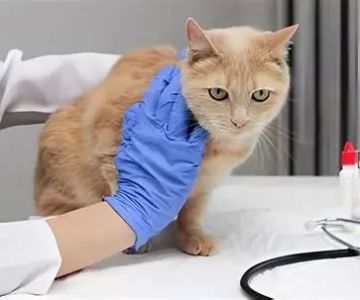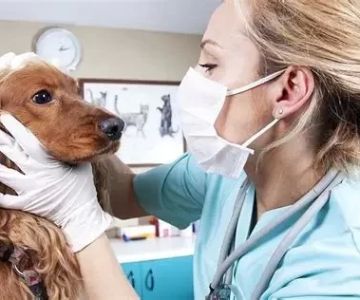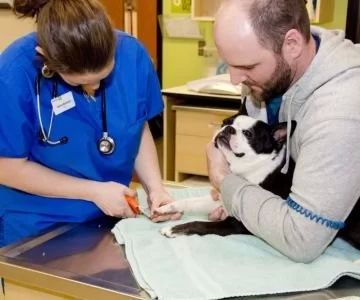- 1 - Understanding Why Cats Get Stressed During Travel
- 2 - Preparing Your Cat Before the Trip
- 3 - Choosing the Right Carrier and Environment
- 4 - Managing Your Cat’s Anxiety on the Road
- 5 - How to Handle Air Travel with Cats
- 6 - Real-World Experiences from Cat Owners
- 7 - Post-Travel Care and Adjustment Tips
- 8 - Professional Advice from Hidden Brook Veterinary
Understanding Why Cats Get Stressed During Travel
The feline nature of territorial comfort
Cats are creatures of habit who find comfort in familiar surroundings. Traveling disrupts their sense of security — new scents, noises, and movements can trigger anxiety. Understanding that stress is a natural response helps you plan more compassionately for your pet’s needs.
Recognizing signs of stress
Common signs of travel-related stress in cats include excessive meowing, panting, drooling, hiding, or aggressive behavior. Some cats may even experience digestive upset or refuse food. Recognizing these signals early allows you to take preventive measures before the trip.
Preparing Your Cat Before the Trip
Acclimating your cat to the carrier
Start by introducing the carrier several weeks before travel. Leave it open in a familiar area with soft bedding and treats inside. Gradually increase the time your cat spends in it. This helps them associate the carrier with safety rather than confinement.
Short practice drives
If your cat will travel by car, begin with short rides around the block to get them accustomed to the motion and sounds. Reward calm behavior with praise or small treats. These positive experiences can significantly reduce anxiety during longer trips.
Visit your veterinarian
Before traveling, a health check-up ensures your cat is fit for the journey. Discuss options for mild calming supplements or pheromone sprays. At Hidden Brook Veterinary, veterinarians can also advise on travel safety, including hydration and feeding schedules for your cat’s comfort.
Choosing the Right Carrier and Environment
Size and ventilation matter
A well-ventilated carrier that’s large enough for your cat to stand and turn around makes a huge difference. Line it with an absorbent pad and a soft blanket that smells like home. Cats feel calmer when surrounded by familiar scents.
Positioning in the car
Place the carrier on a stable surface, ideally secured with a seatbelt. Avoid putting it near air vents or windows where temperature fluctuations or noise could increase stress. Some cats relax better when the carrier is lightly covered with a breathable cloth to reduce visual stimulation.
Managing Your Cat’s Anxiety on the Road
Creating a calm atmosphere
Play soft, soothing music or keep the environment quiet to reduce stress. Avoid sudden stops or loud conversations. Cats are sensitive to changes in sound and motion, so maintaining consistency is key.
Using pheromone sprays and calming aids
Products that mimic feline pheromones can have a relaxing effect. A few sprays inside the carrier before departure can help your cat feel secure. For cats with higher anxiety, consult a vet before using herbal or prescription calming options.
Monitoring your cat’s comfort
Check on your cat during breaks without opening the carrier door in unfamiliar places. Offer small sips of water but avoid feeding large meals before or during travel to prevent nausea.
How to Handle Air Travel with Cats
Know the airline policies
Each airline has its own pet travel policies, so confirm them in advance. Most allow small cats to travel in the cabin under your seat if the carrier meets size requirements. Direct flights are always preferable to minimize handling and stress.
Preparing for security and boarding
At the security checkpoint, you’ll need to carry your cat through the scanner while the carrier goes through X-ray. Using a harness with an ID tag helps ensure safety in case your cat panics. Once on board, keep the carrier secured and avoid unnecessary movement.
Real-World Experiences from Cat Owners
Case story: Luna’s cross-country move
When Emily relocated from New York to California, she was worried about her cat Luna’s reaction to the long flight. With guidance from Hidden Brook Veterinary, she used pheromone wipes, a cozy carrier, and frequent reassurance. Luna stayed calm throughout the journey and adjusted quickly to her new home. Emily later shared that pre-trip conditioning made all the difference.
The weekend traveler’s routine
Another cat owner, Jake, takes his cat Milo on frequent road trips. His secret? Keeping a dedicated travel blanket and portable litter box. Over time, Milo learned that travel didn’t mean chaos—it meant adventure. Their story highlights how consistency builds trust and comfort.
Post-Travel Care and Adjustment Tips
Give your cat space to decompress
Once you arrive, allow your cat to explore their new surroundings gradually. Provide their usual toys, food, and litter setup. Avoid overwhelming them with new experiences immediately after arrival.
Maintain familiar routines
Stick to your regular feeding and play schedules. Familiarity builds stability, helping your cat settle into the new environment more smoothly.
Monitor for delayed stress responses
Some cats may seem fine initially but show signs of stress later, such as hiding or decreased appetite. If symptoms persist, schedule a post-travel consultation with a veterinarian to rule out health issues.
Professional Advice from Hidden Brook Veterinary
Why professional guidance matters
Traveling with cats can be challenging, but professional support ensures both safety and comfort. At Hidden Brook Veterinary, experts provide personalized recommendations based on your cat’s health, temperament, and travel plans.
Helping your cat travel with confidence
With the right preparation and care, travel can be stress-free for your feline companion. Whether it’s a road trip or a flight, the key lies in planning ahead and understanding your pet’s needs. Visit Hidden Brook Veterinary to find trusted advice, travel products, and services that help every cat journey safely and calmly.












